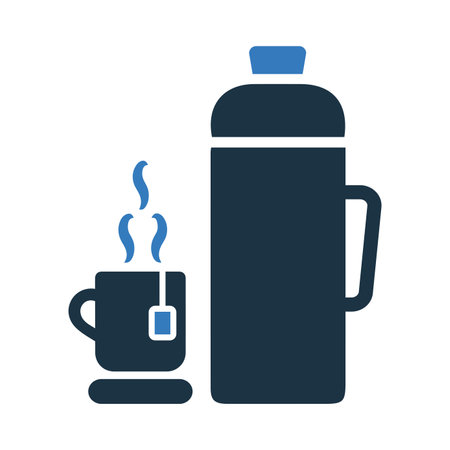1. Understanding the U.S. Coffee Market
The United States is one of the largest coffee-consuming countries in the world, making it a prime market for dropshipping coffee. Whether youre planning to sell specialty beans, ready-to-drink cold brews, or eco-friendly pods, understanding the trends and preferences of American consumers will help you build a successful business.
Current Coffee Trends in the U.S.
American coffee culture is constantly evolving. Here are some of the most popular trends shaping the market today:
- Specialty Coffee: Consumers are leaning toward high-quality, ethically sourced beans with unique flavor profiles.
- Cold Brew & Ready-to-Drink (RTD): Convenience-driven options like canned cold brew and bottled lattes are on the rise.
- Sustainable Packaging: Eco-conscious buyers prefer recyclable or compostable packaging materials.
- Subscription Services: Many customers enjoy receiving fresh coffee delivered to their doorstep on a recurring basis.
Consumer Preferences
Knowing what your target audience wants is crucial. Heres a snapshot of what American coffee drinkers typically look for:
| Preference | Description |
|---|---|
| Taste & Quality | Freshness, roast level, and origin matter to many buyers. |
| Convenience | Single-serve options and fast delivery times are highly valued. |
| Sustainability | Eco-friendly practices influence buying decisions. |
| Health Consciousness | Low-acid, organic, or additive-free coffees are gaining popularity. |
Key Industry Statistics
If youre planning to launch a dropshipping coffee business in the U.S., these numbers can help shape your strategy:
- $95.6 Billion: Estimated value of the U.S. coffee market in 2023.
- 64% of American adults drink coffee every day.
- 79% of coffee consumed at home, making ecommerce a strong channel.
- $1.4 Billion: Projected size of the RTD coffee segment by 2027.
Your Dropshipping Opportunity
The demand for quality and convenience makes dropshipping an attractive model in this industry. With no need to hold inventory, you can focus on curating great products that align with American tastes and values. Understanding these market dynamics gives you a strong foundation to choose your niche, suppliers, and marketing approach effectively.
2. Finding Reliable Coffee Suppliers
If youre planning to start a coffee dropshipping business in the United States, one of the first and most important steps is finding reliable coffee suppliers. U.S. consumers have high expectations when it comes to coffee—they’re looking for quality, freshness, ethical sourcing, and unique flavor profiles. Partnering with trustworthy suppliers who align with these values is key to your success.
What Makes a Supplier Reliable?
A reliable coffee supplier should offer more than just beans. They should provide consistency in quality, transparent sourcing practices, fast fulfillment times, and customer support. Here are a few things to look out for:
| Criteria | Why It Matters |
|---|---|
| Quality Assurance | Ensures that each batch meets specialty-grade standards and satisfies customer taste. |
| Sustainable & Ethical Sourcing | American consumers prefer coffee thats fair trade certified or ethically sourced. |
| Fast Shipping Times | Timely delivery is crucial in eCommerce; customers expect their orders quickly. |
| Private Label Options | Many dropshippers want to build their own brand—look for white-label capabilities. |
| Roasting & Packaging Services | This adds value by delivering freshly roasted beans directly to your customers. |
Where to Find Coffee Dropshipping Suppliers
There are a number of platforms and directories where you can find trusted coffee suppliers that serve the U.S. market:
- Shopify App Store: Search for dropshipping apps like Dripshipper or Syncee that focus on coffee.
- Google Search: Use keywords like “coffee dropshipping suppliers USA” or “private label coffee dropshippers.”
- B2B Marketplaces: Platforms like Faire, Alibaba (for private label packaging), or even ThomasNet can be helpful.
- Coffee Trade Shows: Events like Coffee Fest or SCA Expo are great places to meet roasters and suppliers face-to-face.
Top Coffee Dropshipping Suppliers for the U.S. Market
| Supplier Name | Main Features | U.S.-Based? |
|---|---|---|
| Dripshipper | Private label coffee, integrates with Shopify, ships from the U.S. | Yes |
| Ava Roasteria | Sustainable beans, custom branding, small-batch roasting | Yes |
| Brewed Coffee Supply Co. | Diverse roast options, eco-friendly packaging, fast fulfillment | Yes |
| Kafina Coffee Co. | Sells organic blends, offers white-label services | Yes |
The Importance of Sampling Products First
Before choosing a supplier, always order samples of their products. This helps you evaluate the flavor profile, aroma, packaging quality, and overall presentation—just like your customers would experience it. Take notes and even share samples with friends or colleagues for feedback.
Taste Test Checklist:
- Aroma: Does it smell fresh and appealing?
- Taste: Is it smooth? Bitter? Acidic? Balanced?
- Mouthfeel: Is the texture rich or watery?
- Packaging: Is it attractive and protective?
- Shelf Life: How long will it stay fresh after roasting?
Aligning with Consumer Expectations in the U.S.
Coffee drinkers in the U.S., especially millennials and Gen Z shoppers, care deeply about what goes into their cup—from origin to impact. Many prefer single-origin coffees, fair trade certifications, low-acid blends, organic options, and sustainable packaging. When selecting a supplier, ask questions like:
- “Where do you source your beans?”
- “Do you offer compostable or recyclable packaging?”
- “Are your farms certified by any sustainability organizations?”
Your suppliers answers will help shape your brand’s story—and that story matters a lot to today’s conscious consumers.
Next Step: Building Your Brand Identity
Once youve found a supplier that checks all the boxes for quality, reliability, and ethics, youre ready to move on to crafting your brand identity—how youll stand out in a crowded online coffee marketplace. Well dive into that in Part 3 of this guide!

3. Setting Up Your Dropshipping Store
If youre ready to start dropshipping coffee in the United States, setting up your online store is one of the most important steps. A user-friendly, professional-looking store can help you stand out and build trust with American customers. Let’s break down the key elements you need to consider, including platforms, tools, payment options, and legal requirements.
Choosing the Right E-commerce Platform
The first step is choosing an e-commerce platform that supports dropshipping and works well for the U.S. market. Here’s a quick comparison of the most popular platforms:
| Platform | Best For | Key Features | Price Range |
|---|---|---|---|
| Shopify | Beginners & experienced sellers | User-friendly, large app ecosystem, great for dropshipping | $39 – $399/month |
| WooCommerce (with WordPress) | Customizable stores with full control | Open-source, flexible design, plugin support | Hosting + plugins ($10 – $50/month average) |
| BigCommerce | Larger scale operations | No transaction fees, built-in features, scalable | $39 – $399/month |
Essential Tools for Coffee Dropshipping
To streamline your stores operations and provide a great customer experience, consider integrating these tools:
- Dropshipping apps: Oberlo (for Shopify), Spocket, or Modalyst make it easy to find U.S.-based coffee suppliers.
- Email marketing tools: Klaviyo or Mailchimp help you stay connected with customers.
- Analytics: Google Analytics and heatmap tools like Hotjar give insights into customer behavior.
- Customer service: Add live chat using tools like Tidio or Zendesk for real-time support.
User Experience Design Tips
Your website should reflect American shopping expectations. Here are some tips to keep in mind:
- Simplified navigation: Make it easy to browse different coffee products or subscriptions.
- Mobile optimization: Most U.S. shoppers use smartphones—your site must be responsive.
- Fast loading speeds: Use optimized images and a reliable hosting provider.
- Clear branding: Build a brand story that resonates with American coffee culture—sustainability, origin stories, or artisan roasting are big selling points.
Payment Options for U.S. Customers
A smooth checkout experience is crucial. Offer trusted and familiar payment methods used widely in the U.S.:
| Payment Method | Description |
|---|---|
| Credit/Debit Cards (Visa, MasterCard, Amex) | The most common way Americans shop online. Always include this option. |
| PayPal | A trusted third-party processor many users prefer for added security. |
| Apple Pay / Google Pay | Mobile wallet payments are growing rapidly in popularity among younger consumers. |
| Buy Now, Pay Later (BNPL) | Add services like Afterpay or Klarna to appeal to budget-conscious buyers. |
Legal Considerations in the U.S. Market
Business Structure & Registration
You’ll need to register your business legally. Many online sellers choose an LLC (Limited Liability Company) for its protection and tax benefits. Register through your state’s Secretary of State website or platforms like LegalZoom if you want help with setup.
TAX ID & Sales Tax Collection
You’ll need an EIN (Employer Identification Number) from the IRS—it’s free and can be applied for online. Depending on your location and where your customers live, you may also need to collect sales tax. Use tax automation software like TaxJar or Avalara to make compliance easier.
Coffee-Specific Regulations
If youre selling specialty or organic coffee, make sure your suppliers are certified according to FDA regulations. Also ensure any health claims follow FTC advertising guidelines—avoid saying things like “this coffee cures fatigue” unless you have scientific backing.
Your Store Is Your Coffee Shopfront
Treat your online store as your digital café—it should be welcoming, easy to navigate, and tell a compelling story about why your coffee is worth trying. With the right tools and a clear understanding of U.S. consumer expectations, youre setting yourself up for success in this competitive market.
4. Marketing Your Coffee Brand in the U.S.
Once your dropshipping coffee business is set up, the next big step is to attract American coffee lovers. The U.S. market is full of passionate coffee drinkers who care about quality, origin, and brand story. To stand out, you’ll need a smart digital marketing plan that speaks directly to them. Let’s break down how you can do that using SEO, influencer partnerships, and culturally relevant branding.
Search Engine Optimization (SEO)
SEO helps your online store show up when people search for things like “best organic coffee” or “coffee subscription in the U.S.” Here’s how to get started:
- Use Keywords: Add popular search terms naturally into your product descriptions, blog posts, and page titles.
- Write Helpful Content: Create blog articles answering common questions like “How to choose the right roast level?”
- Local SEO: If youre targeting specific U.S. regions or cities, include those locations in your content.
Popular Coffee-Related Keywords in the U.S.
| Keyword | Monthly Searches (Approx.) |
|---|---|
| Best coffee beans | 33,000 |
| Coffee subscription USA | 5,400 |
| Organic coffee online | 2,900 |
| Dark roast vs light roast | 1,300 |
Partnering with Influencers
In the U.S., influencer marketing is a powerful way to build trust fast. Find influencers who already talk about lifestyle, food, or coffee on platforms like Instagram, TikTok, or YouTube.
Steps to Start Influencer Marketing:
- Identify Your Audience: Are you targeting busy professionals? Fitness lovers? Millennials?
- Select Relevant Influencers: Look for micro-influencers (5k–50k followers) who have strong engagement rates.
- Create Authentic Campaigns: Let influencers tell their personal story about trying your coffee—don’t make it too salesy.
Culturally Relevant Branding
Your brand should reflect what American customers care about: sustainability, storytelling, and community. Use language and visuals that feel familiar and trustworthy to a U.S. audience.
Tips for Culturally Relevant Branding:
- Tone of Voice: Keep it friendly and conversational. Americans respond well to humor and honesty.
- Sustainability Matters: Highlight if your coffee is ethically sourced or eco-friendly—it matters more than ever.
- Telling Your Story: Share why you started your brand and what makes it different from others in the market.
Combine Tactics for Better Results
The most successful dropshipping coffee brands don’t rely on just one marketing method—they mix SEO with influencer content and strong branding. By combining these strategies, you can build a loyal following of American coffee lovers who come back again and again.
5. Navigating Logistics and Customer Service
Running a successful dropshipping coffee business in the U.S. means more than just offering great beans—it’s about delivering them quickly and keeping your customers happy every step of the way. Here’s how to manage logistics and customer service like a pro.
Understanding U.S. Shipping Expectations
American customers are used to fast and reliable shipping, especially with services like Amazon Prime setting high standards. When it comes to coffee, freshness matters, so delivery speed is key.
Common U.S. Shipping Timeframes
| Shipping Option | Expected Delivery Time | Customer Expectation |
|---|---|---|
| Standard Shipping | 3–7 business days | Acceptable for non-urgent orders |
| Expedited Shipping | 2–3 business days | Preferred for repeat buyers or gifts |
| Same-Day/Next-Day Shipping | 1 day or less | Expected in major cities for premium service |
Best Practices for Order Fulfillment
Your fulfillment partner plays a huge role in your brands reputation. Choose suppliers that roast and ship from within the U.S. to reduce delivery times and ensure quality control. Make sure they provide tracking numbers and automatic updates for every order.
Key Fulfillment Tips:
- Select U.S.-based suppliers: This cuts down on shipping time and customs delays.
- Use automated systems: Integrate your store with your supplier to auto-process orders.
- Keep inventory updated: Ensure popular roasts are always in stock to avoid delays.
- Add tracking info immediately: Americans like to know where their package is at all times.
Providing Excellent Customer Service
A big part of growing a loyal customer base is how you treat them after they click “buy.” American shoppers value clear communication, easy returns, and fast responses to questions or issues.
Customer Service Essentials:
- 24-48 Hour Response Time: Always reply to inquiries within one business day.
- User-Friendly Return Policy: Offer hassle-free returns when possible, especially if an item arrives damaged or incorrect.
- Email & Chat Support: Give customers multiple ways to reach you—email, live chat, or even SMS support.
- Proactive Communication: If theres a delay or issue, let your customer know right away—they’ll appreciate the honesty.
A Quick Look: What American Coffee Buyers Expect
| Aspect | Customer Expectation |
|---|---|
| Delivery Speed | Fast (preferably under 5 days) |
| Coffee Freshness | Brewed or roasted within the past few days |
| Support Availability | Email + Live Chat with quick replies |
| Smooth Returns | No-hassle process with clear instructions |
Navigating logistics and customer service may seem overwhelming at first, but once you have systems in place, it becomes second nature. Focus on reliability, speed, and communication—that’s what keeps American coffee lovers coming back for more.


